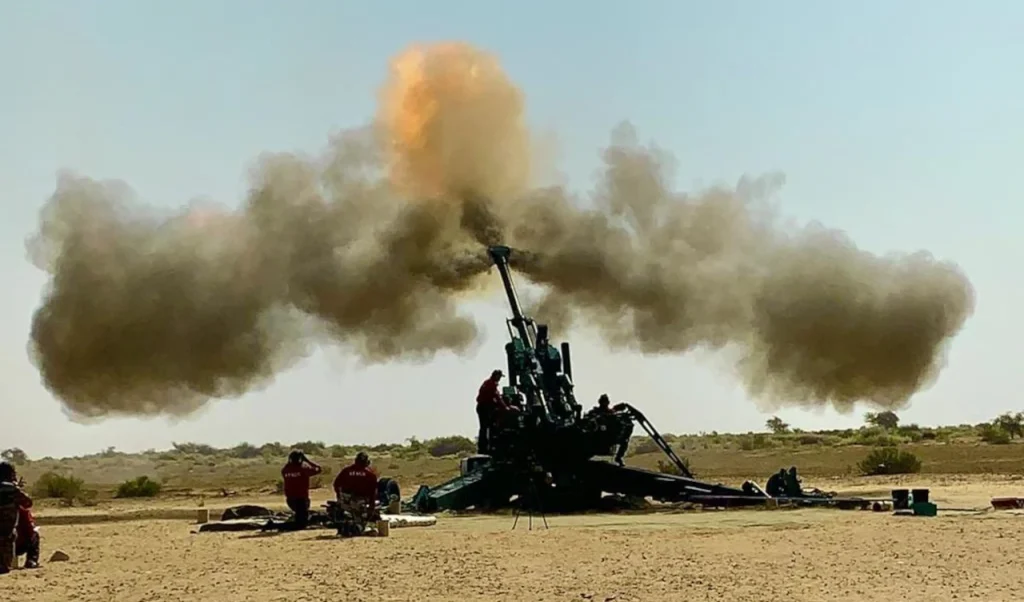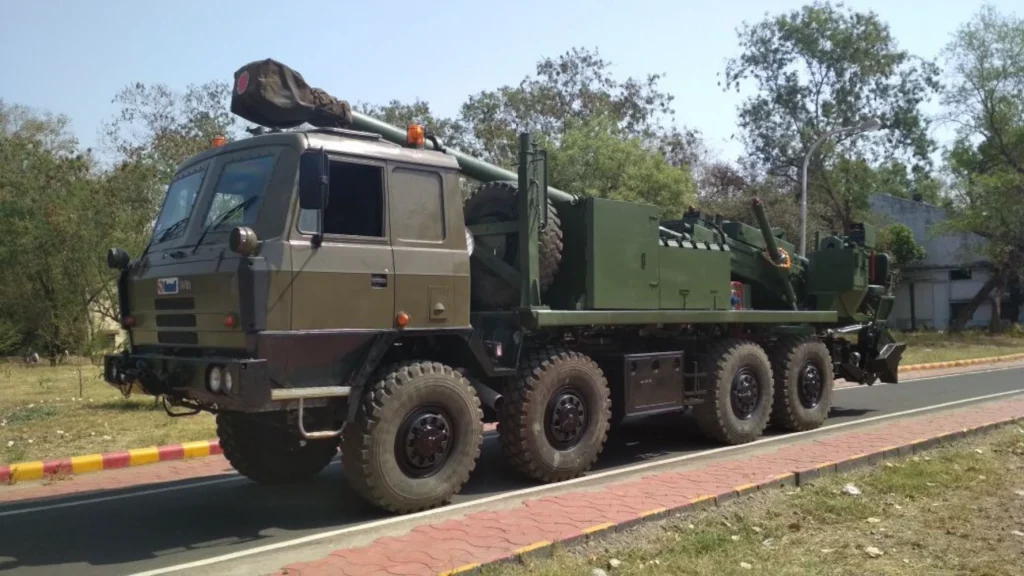The corruption of the Bofors 155mm Howitzer deal and the subsequent decades-long delay in India’s artillery acquisition have been extensively discussed. Nevertheless, we must understand the Indian Army’s role in exacerbating the situation.
The process by which India transitioned from 130mm guns to 155mm guns, rather than 152mm guns from the Soviet Union, is not well understood by me. As per open sources, the Indian Ministry of Defense initiated a search for 155mm artillery after it discovered that Pakistan was attempting to acquire them from the United States. It is difficult to determine whether the move was a result of the Indian Army’s customary knee-jerk reaction or if the political circles were the driving force behind it. India also contacted the United States, but the process was ultimately stopped for political reasons. Meanwhile, India contacted other manufacturers, and the selection process was subsequently reduced to the following: the Bofors FH77B, the FH-70 manufactured by Vickers Ltd in the United Kingdom, OTO Melara in Italy, and Rheinmetall GmbH in West Germany; the Austrian NORICUM 155mm GH N-45; and the French GIAT 155mm Tracté (TR). Ultimately, Bofors was chosen, which involved the transfer of technology.
If artillery purchase was a concern from the 1990s to 2010, the Indian Army’s purchase of other critical equipment is also questionable. Consider the combat tank as an illustration. The T-72 Tanks from Russia were the other significant acquisition during that period. The Arjun Tank initiative resulted from the Indian Army’s request for a 120 mm, 1400 HP, and 50-ton tank from the Defence Research and Development Organisation (DRDO) in the 1980s. The Soviet Union, in contrast, proposed the T-72 tank, which was more lightweight. Ultimately, India acquired the licensed production rights for the 41.5-tonne T-72M-1982 Ob’yekt 172M-E6 with a smaller engine power in considerable quantities. The Arjun Tank development required introducing and using tanks in an incremental improvement process, as evidenced by similar equipment worldwide. This did not happen in its true spirit. Then, the customary hasty acquisition of the T-90 tanks occurred. Another example is the INSAS Rifle, where the Indian Army did not establish a program for its successor.

After 2000, several failed attempts at modernizing Artillery were made, and we already know the state of the Indigenous attempts. Most of the time and energy was spent improving the existing guns. The Indian Amy simply did not have the genes to make and fight.
Two events transpired by 2010. Indian artillery manufacturers were able to provide some credible alternatives. In addition, India could acquire the M777 through intergovernmental purchases, such as the United States foreign military sales (FMS) route. Nevertheless, this did not lead to the substantial modernization of the Artillery that was desired.
The Indian Army promptly procured the M777 guns for use in mountainous regions. Similarly, L&T has already supplied the Army with the K9 VAJRA-T, a variant of the K9 Thunder, a popular 155 mm / 52 caliber weapon used by armies worldwide. The gun was developed in collaboration with Hanwha Defence, a Korean company. Currently, 100 of these guns are in use in Army formations, and the company is processing another order.
Now, these are largely imported systems. Let’s look into the situation with Indigenous guns.
The Dhanush Gun System is produced by the Gun Carriage Factory in Jabalpur. This weapon is an electronics upgrade to the Bofors Gun system. Currently, 114 guns have been contracted out of an estimated 400 that are scheduled to be inducted. The induction of this gun system is presently underway.
Next, we will look into the situation with the indigenous designs.
The DRDO unit, the Armament Research & Development Establishment (ARDE), has developed an Advanced Towed Gun System with a 155mm/52 caliber (ATAGS) in collaboration with Bharat Forge Ltd and Tata Advanced Systems Ltd (TASL) as Development and Production Partners. ATAGS has successfully completed the trials, and the contract negotiations will commence in the near future. There are approximately 300 of these guns that are intended for procurement.

Then there are Self-Propelled Guns, which are also being procured for the Indian Army in terms of the K9 Vajra and the Indian Mounted Gun Systems (MGS). In 2023, Tata Aerospace and Defence (TAD) introduced the 155 mm/52 caliber MGS in 2023. The MGS is a Tata 8×8 high-mobility vehicle that is equipped with a 155 mm/52 caliber cannon. The procurement of 155mm MGS is at the Request For Proposal stage, where the Artillery is looking towards approximately three hundred such guns in the first phase.
Additionally, approximately 400 Towed Gun Systems are required. Dhanush is currently in use by the Indian Army and is below the 15-ton limit specified. Kalyani Bharat-52 is another contender, with an estimated weight of 13 tons. Kalyani Ultra-Light Howitzer (ULH) is even lighter. The primary objective is to acquire 155 mm X 52 caliber Towed Gun Systems, which are specifically engineered to be more adaptable and lightweight for operations in high-altitude regions, such as mountainous terrain.
Historically, it appears that the Army has placed a higher priority on the purchase of established technology and a more rapid pace of acquisition than it has on the potential advantages of indigenous development. There is a high probability that the Army’s worries over the dependability and performance of domestic alternatives, particularly for essential pieces of equipment, were the driving force behind this preference for proven, imported systems. There are indications that the Army has shown greater openness to incorporating indigenous weapon systems. Despite this, there is still potential for more progress in the Indian Army’s adoption of indigenous initiatives. This is because the preference for imported technology, particularly for vital systems, may continue to exist to some degree.
